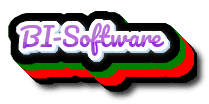The insurance industry is highly competitive, with numerous players vying for market share. To stay ahead of the curve, insurance companies need to focus on providing exceptional customer service, streamlining operations, and making data-driven decisions. One effective way to achieve these goals is by implementing an all-in-one insurance industry CRM (Customer Relationship Management) software. In this article, we will delve into the world of insurance CRM software, exploring its features, benefits, and best practices for implementation.
<img src=”https://www.crmguides.com/wp-content/uploads/2021/03/CRM.v636559587933277384.jpg” alt=”All-in-One Insurance Industry CRM Software: Streamlining Operations and Enhancing Customer Experience” />
What is Insurance CRM Software?
Insurance CRM software is a specialized tool designed to help insurance companies manage their customer interactions, policies, claims, and sales processes in a centralized platform. It enables insurers to store and analyze customer data, track interactions, and provide personalized services to policyholders. By leveraging insurance CRM software, companies can enhance customer satisfaction, improve operational efficiency, and drive business growth.
Key Features of All-in-One Insurance CRM Software
A comprehensive insurance CRM software should include the following features:
- Contact Management: Store and manage customer contacts, policy information, and interaction history.
- Policy Management: Automate policy administration, including quoting, binding, and renewals.
- Claims Management: Streamline claims processing, from intake to settlement.
- Sales and Marketing: Track leads, manage campaigns, and analyze sales performance.
- Customer Service: Provide omnichannel support, including phone, email, chat, and social media.
- Data Analytics: Offer real-time insights and reporting on customer behavior, policy performance, and business metrics.
- Integration: Seamlessly integrate with existing systems, such as policy administration systems, accounting software, and data warehouses.
- Security and Compliance: Ensure data encryption, access controls, and regulatory compliance (e.g., GDPR, HIPAA).
Benefits of Implementing Insurance CRM Software
The benefits of using all-in-one insurance CRM software are numerous:
- Improved Customer Experience: Provide personalized services, efficient claims processing, and timely communication.
- Increased Efficiency: Automate manual processes, reduce paperwork, and minimize errors.
- Enhanced Data Insights: Gain actionable insights into customer behavior, policy performance, and business operations.
- Better Sales and Marketing: Track leads, analyze sales performance, and optimize marketing campaigns.
- Improved Regulatory Compliance: Ensure adherence to industry regulations and reduce the risk of non-compliance.
- Cost Savings: Reduce operational costs, minimize manual errors, and optimize resource allocation.
- Competitive Advantage: Differentiate your company from competitors by providing exceptional customer service and streamlined operations.
Best Practices for Implementing Insurance CRM Software
To ensure a successful implementation, follow these best practices:
- Define Business Objectives: Identify specific goals and objectives for implementing insurance CRM software.
- Assess Current Processes: Evaluate existing processes, systems, and data to determine integration requirements.
- Choose the Right Vendor: Select a reputable vendor with industry expertise and a proven track record.
- Configure and Customize: Configure the software to meet your company’s specific needs and workflows.
- Train Employees: Provide comprehensive training to ensure employees are comfortable using the new system.
- Monitor and Evaluate: Continuously monitor system performance, gather feedback, and make adjustments as needed.
Frequently Asked Questions (FAQs)
- Q: What is the typical implementation timeline for insurance CRM software?
A: Implementation timelines vary depending on the complexity of the project, but typically range from 3 to 12 months. - Q: How much does insurance CRM software cost?
A: Costs vary depending on the vendor, features, and number of users. Expect to pay between $50 to $200 per user per month. - Q: Can insurance CRM software be integrated with existing systems?
A: Yes, most insurance CRM software solutions offer integration with popular policy administration systems, accounting software, and data warehouses. - Q: Is insurance CRM software secure and compliant with industry regulations?
A: Reputable vendors prioritize security and compliance, ensuring their software meets industry standards and regulations (e.g., GDPR, HIPAA). - Q: Can insurance CRM software be customized to meet specific business needs?
A: Yes, most vendors offer configuration and customization options to meet the unique needs of your business.
Conclusion
In today’s competitive insurance landscape, all-in-one insurance CRM software is a game-changer. By providing a centralized platform for managing customer interactions, policies, claims, and sales processes, insurance companies can enhance customer satisfaction, streamline operations, and drive business growth. When selecting an insurance CRM software, consider key features, benefits, and best practices for implementation. With the right solution in place, your company can stay ahead of the competition and achieve long-term success. Remember to ask the right questions, evaluate your options carefully, and prioritize a solution that meets your unique business needs. By doing so, you’ll be well on your way to harnessing the power of insurance CRM software and achieving exceptional customer experiences.
<h2>Closure</h2>
Thus, we hope this article has provided valuable insights into All-in-One Insurance Industry CRM Software: Streamlining Operations and Enhancing Customer Experience. We thank you for taking the time to read this article. See you in our next article!
